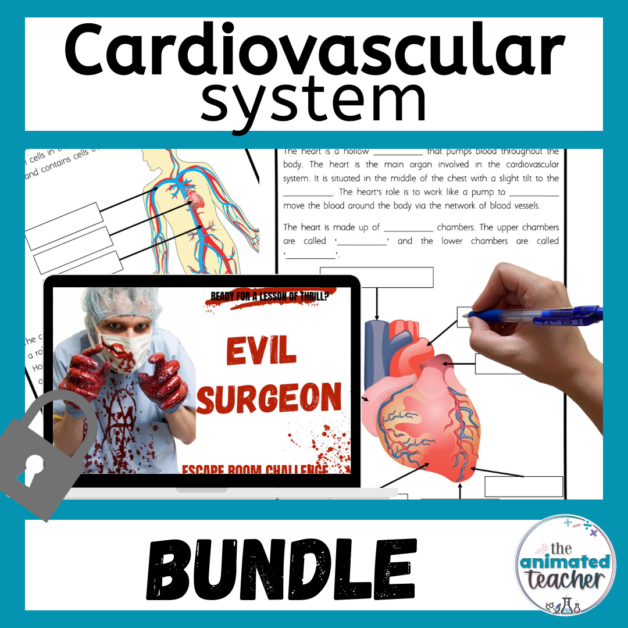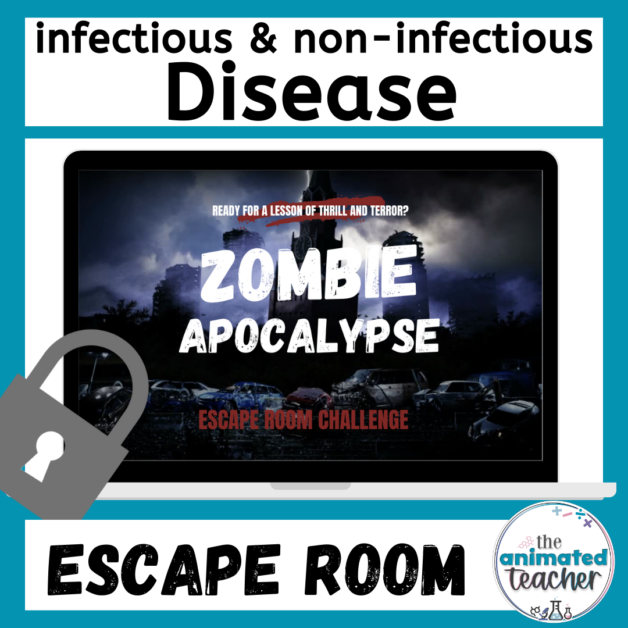
42 fun Easter science activities for middle school
42 fun Easter science activities for middle school
Easter is the perfect time to include some fun science experiments and stem activities in class. This easter season, spark your students curiosity and optimize learning by incorporating some of these fun easter science activities. Having fun with some easter themed experiments and easter activities is a great way to engage young scientists in the classroom.
This awesome list of easter science activities covers a wide range of scientific concepts so you can find the right fit for your class. Find activities and easter experiments for chemical reactions, density, engineering, forces, microscopes, chromatography and more.
fun easter science activities
easter science activities

42 easter science activities and easter STEM challenges for middle school
Don’t stress about what to do for easter – check out these amazing easter science activities:
- Digital escape room: Always my favorite type of resource for fun easter science activities as they are zero prep! Get an Easter Escape Room to review scientific measurement here or visit on my TPT store.
- Crosswords: Just print and go. This scientific method crossword reviews key terms and understanding with some cute Easter clip art to bring it in theme.
- Egg Drop Experiment: Design and build a contraption to protect an egg from cracking when dropped from a height. This is a fun easter STEM challenge to run with your class and doesn’t require a lot of preparation. Just provide a whole heap of scrap materials, string and sticky tape and let the students design the rest!
- Egg Geodes: Create crystal-filled eggs using alum powder and food coloring.
- Egg-cellent Osmosis: Investigate how different concentrations of saltwater affect the osmosis of an egg.
- Easter Egg Rockets: Build rockets using plastic Easter eggs and investigate how varying amounts of fuel (baking soda and vinegar) affect their launch height.
- Easter Egg Volcanoes: Create miniature volcanoes inside plastic Easter eggs using baking soda and vinegar.
- Easter Egg Density Tower: Layer liquids of different densities (e.g., corn syrup, water, vegetable oil) inside a transparent container. To place an easter twist on this classic science experiment, add different types of easter eggs (or easter decorations) in the tower to compare their density with the different liquids.
- Eggshell Strength Test: Compare the strength of different types of eggshells (chicken, duck, quail) by applying increasing weights until they crack.
- Egg in a Bottle: Demonstrate the principles of air pressure by placing a peeled hard-boiled eggs on the mouth of a bottle and observing it being sucked in.
- Egg Yolk Art: Use droplets of food coloring to create intricate designs in egg yolks.
- Egg Incubation: Create a makeshift incubator and monitor the development of a fertilized chicken egg.
- Egg Float Test: Explore egg freshness by determining whether an egg sinks or floats in water.
- Eggshell Dissolving Experiment ‘fizzy eggs’: Investigate the effects of different liquids (vinegar, soda, juice) on eggshell dissolution.
- Egg Carton Catapults: Construct mini catapults using egg cartons and rubber bands to launch small candies or marshmallows.
- Egg Spinner: Build a device to spin an egg and observe how centrifugal force affects its stability.
- Easter Egg Chromatography: Separate the colors in dyed Easter egg shells using chromatography paper and water.
- Easter Egg Batteries: Create batteries using copper and zinc electrodes inserted into Easter eggs filled with saltwater or vinegar.
- Egg Parachutes: Explore air resistance and design and test parachutes made from various materials to safely drop an egg from a height.
- Egg Insulation Experiment: Test different materials (cotton balls, foam, bubble wrap) to see which provides the best insulation for keeping an egg warm.
easter science activities
21. Eggshell Microstructure Observation: Use a microscope to examine the microscopic structure of eggshells.
22. Eggshell Fertilizer: Crush eggshells and investigate their effectiveness as a fertilizer for plants.
23. Egg Rolling: Study the physics of rolling by racing eggs down inclined surfaces of different materials.
24. Egg Dyeing with Natural Ingredients: Explore the chemistry of natural dyes by using ingredients like onion skins, turmeric, or beet juice to dye eggs.
25. Egg Experiment pH: Test the pH of different substances using crushed eggshells as an indicator.
26. Easter Egg Static Electricity: Rub plastic Easter eggs with different materials and observe how they attract or repel each other due to static electricity.
27. Eggshell Mosaics: Create intricate mosaic patterns using crushed dyed eggshells.
28. Egg Color Mixing: Explore color mixing by dipping eggs into primary-colored dyes and observing the resulting secondary colors.
29. Easter Egg Cartesian Diver: Create Cartesian divers using plastic Easter eggs and investigate the effects of adding weights or changing buoyancy.
30. Eggshell Flame Test: Heat crushed eggshells over a flame and observe the colors produced to identify different elements present.
31. Egg Bouncy Ball: Investigate the properties of polymers by making bouncy balls from egg whites and borax solution.
32. Eggshell Artillery: Build catapults or trebuchets to launch eggs and explore projectile motion.
33. Easter Egg Electromagnets: Wrap wire around plastic Easter eggs and connect them to a battery to create electromagnets.
34. Eggshell Carbonate Test: Test for the presence of carbonate ions in eggshells by reacting them with acid and observing the release of carbon dioxide.
35. Eggshell Soundproofing: Test the effectiveness of eggshells as a soundproofing material by measuring the transmission of sound through eggshell barriers.
36. Eggshell Filtration: Investigate the use of eggshells as a natural filtration material by testing their ability to remove impurities from water.
37. Eggshell Weathering: Expose eggshells to simulated weathering conditions (sunlight, water, wind) and observe changes over time.
38. Eggshell UV Protection: Test the ability of eggshells to block ultraviolet (UV) radiation by exposing them to UV light and comparing to untreated shells.
39. Easter Egg Fermentation: Investigate the process of fermentation by fermenting eggs in different liquids (e.g., vinegar, brine) and observing gas production.
40. Eggshell Biodegradability: Compare the biodegradability of eggshells in different environments (compost, soil, water) over time.
41. Easter egg crystals: Grow crystals on eggshells using a supersaturated solution of salt, sugar or copper sulfate and observe crystal formation patterns.
42. Easter egg hunt: create an easter egg hunt with scientific clues to help students find the eggs or easter candy around the lab or school.
easter science activities
Conclusion
As we approach the Easter season, let’s embrace the opportunity to bring joy, creativity, and relevance into our classrooms. By incorporating Easter science activities, we’re not only enriching our students’ educational experiences but also fostering a love for learning that extends far beyond the confines of the classroom. Happy Easter and happy learning!
Be sure to share this list of easter science experiments with your teaching friends!
easter science activities
About the Author






































